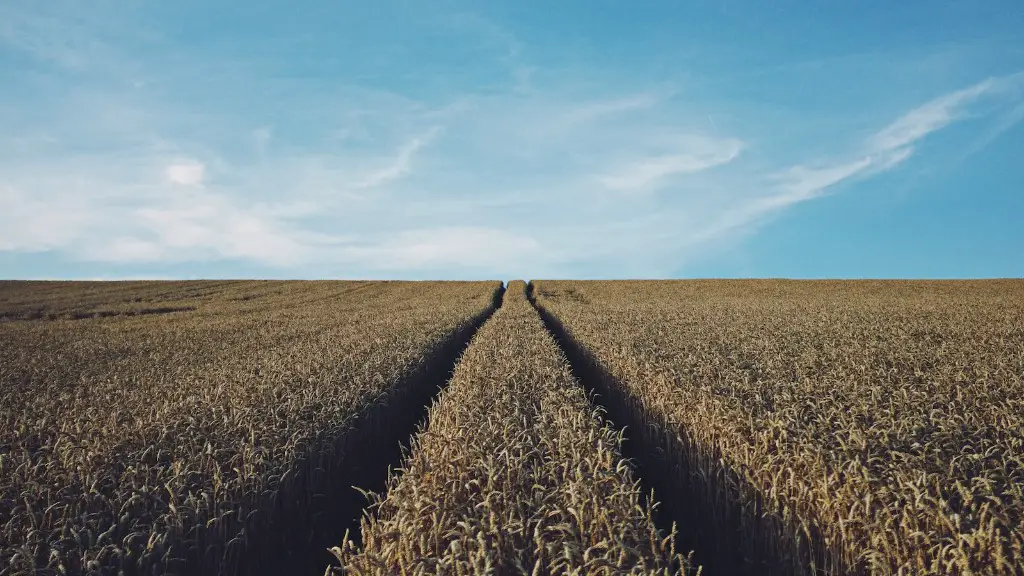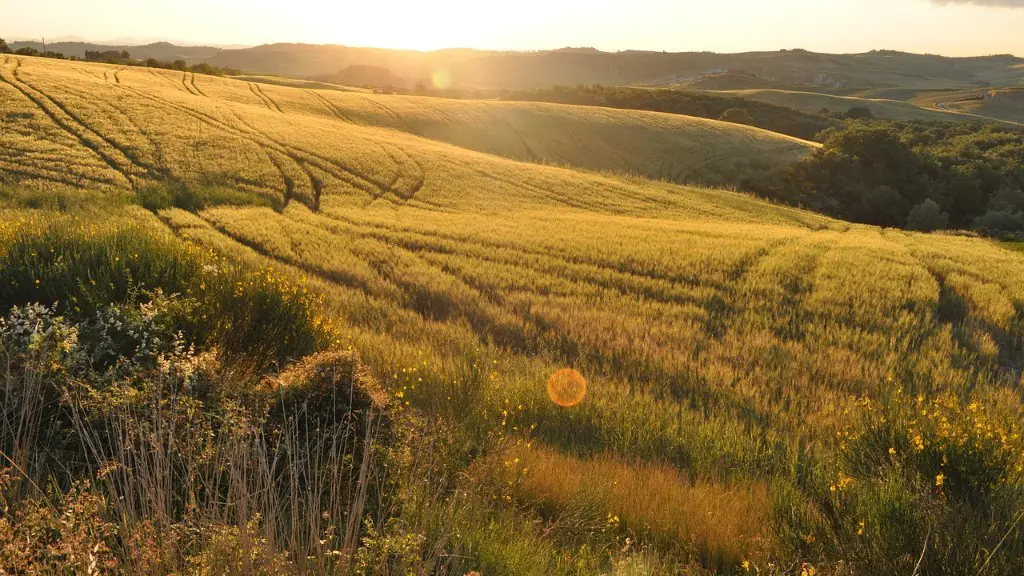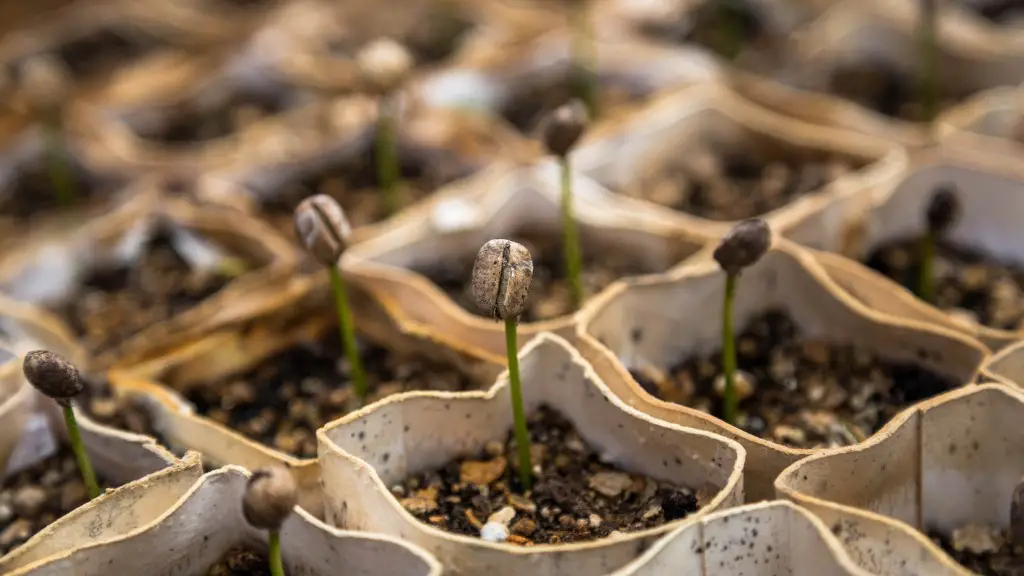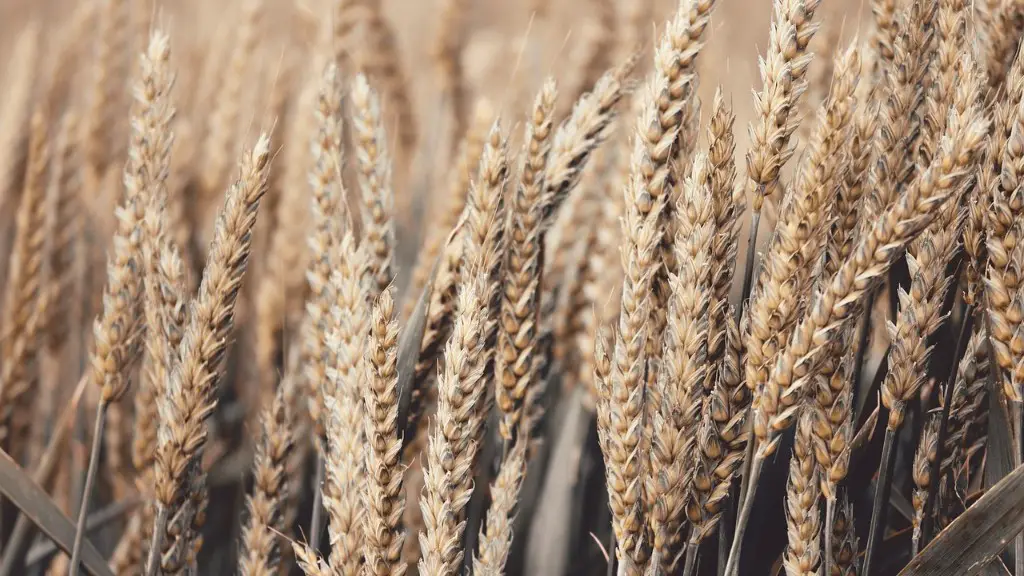Humans have been practicing agriculture since prehistoric times, with evidence found in archaeological remains and ancient texts. In a nutshell, the key reasons why humans started to practice agriculture were to have better dietary choice, improve nutrition, and generate surplus for trade. Additionally, the availability of reliable water sources was a major deciding factor.
One of the main methods used in ancient times to begin this practice of agriculture is called slash-and-burn. Commonly known by its Spanish name ‘swidden’, it involves removing natural vegetation and burning it to create nutrient-rich manure which is used to fertilize the soil. It was widely used by early agrarian societies in Africa, Asia, and the Americas, although it is considered environmentally unsustainable.
The main advantage of practicing agriculture, compared to hunting and gathering, is that farmers were able to cultivate high yield varieties of crops and store them for future consumption. This enabled them to be more independent from seasonal changes, subsisting on their own throughout the year without being dependent on seasonal hunting and gathering. This act of collecting and protecting food assets was certainly an important step that heralded the modern era of food production and storage, which is the basis of the modern food production systems.
Agricultural practices also allowed for greater specialization and has given rise to cultural complexity and diversification among humans. For example, with the advent of agriculture, certain individuals in societies could specialize in other occupations such as trade, craft and architecture. This allowed for the development of complex societies and economies and enabled humans to better understand and manipulate their environments.
Furthermore, along with the development of new technology and advances in areas such as genetics, our ability to manipulate and cultivate food, both plants and animals, has grown exponentially. This has allowed humans to increase agricultural productivity and efficiency, increasing the amount of food produced per acre of land, and expanding the types of crops and livestock we can produce. In the contemporary world, genetically modified organisms, better fertilizer, and improved irrigation technologies are some of the methods used by agricultural producers.
Finally, the practice of agriculture has also allowed us to develop more resilient communities through the increased availability of food and other resources, as well as its role in bringing communities together for shared labor, as was common during harvest time. In addition, with the cooperation of family and community, it has even provided a new way for humans to express their identity through traditional recipes and cooking techniques.
Impact of Agriculture on Climate Change
Agriculture has been identified as one of the leading causes of global climate change. As food production has increased over the years, farmers have had to find ways to maximize yields while still protecting the environment. This has meant increasing the use of agricultural chemicals, such as fertilizers, as well as deforesting land to make way for new crops.
These approaches to production may lead to soil erosion and water pollution, as well as emissions of greenhouse gases. There is also evidence that the cultivation of livestock contributes significantly to the release of such gases, particularly methane and nitrous oxide. Such emissions have further intensified global warming and other climate events, making it harder and harder for humans to find ways to protect and conserve the planet.
Agricultural production might also lead to water pollution and ecosystem degradation, particularly when unsustainable methods of operation are used. For example, the overuse of fertilizers and pesticides can lead to the release of harmful toxins into bodies of water, posing risks to the health and safety of the humans, animals and plants that depend on the water.
Furthermore, when farmers practice monocropping and rely on the same varieties of crops year in and year out, this has been known to reduce the genetic diversity of crops, leading to a greater risk of shortages or pandemics. Moreover, deforestation to make way for pastureland can also have a damaging effect, reducing habitats of various species and causing species extinction.
Agricultural Practices and Technologies to Combat Climate Change
Fortunately, farmers and agriculturalists have come up with various novel ways to reduce the impacts of their farming practices on climate change. Some of the most popular methods include crop rotation, the use of cover crops, and the use of natural fertilizers or compost. By mixing multipurpose crops and letting them rest each season, soils can rebuild their organic matter, which can help retain water and combat drought.
In addition, the development of agroforestry systems, in which crops are planted in the shade of trees, is seen as a potential solution for mitigating climate change. By planting trees, farmers can help create a more hospitable climate for their crops and livestock. Trees also offer countless benefits such as reducing soil erosion, improving air quality, providing food and reducing the need for artificial fertilizer.
Furthermore, technological solutions such as precision farming, global positioning systems (GPS) and drone technology are being used to better manage crops. A GPS-enabled system can help farmers reduce their application of fertilizers, pesticides, and herbicides to target-specific patches in a field, ensuring more efficient and effective application of these inputs.
As well, advances in biotechnology are enabling farmers to manipulate plants and animals in ways that make them more resistant to disease and more tolerant of climate variation. For example, genetic engineering techniques can be used to create crops that can survive in harsher climates and longer seasons.
Impact of Agricultural Practices on Biodiversity
Agricultural practices can also have an adverse impact on biodiversity. Monocultures, the cultivation of a single crop species on a large scale, can reduce genetic diversity of crops, increase pest and weed control costs, and reduce agrobiodiversity in the areas where the crops are grown.
The use of chemical pesticides and fertilizers can also have harmful effects on the environment. Pollutants can enter bodies of water, causing toxic effects on aquatic life, while toxic dust particles can also accumulate in the atmosphere, further reducing air quality.
Moreover, agricultural practices can cause deforestation and habitat destruction, reducing the number of plant and animal species in an area. This can reduce the ability of the species to continue their lifecycles, impacting their ability to reproduce and increase population numbers.
Sustainable Practices to Relieve the Impact on Biodiversity
Luckily, there are various strategies which can be used to reduce the negative impacts that agricultural practices can have on biodiversity. For example, the use of cover crops and crop rotation can help reduce pest populations, reduce fertilizer use, and preserve soil fertility, leading to a more sustainable agricultural system.
Integrated pest management systems, which involve the use of natural predators and other non-chemical methods to reduce pest populations, are also popular. By providing natural habitats and resources for beneficial insects, such as ladybugs, farmers can provide pest control without having to use potentially harmful chemical pesticides.
Organic and biodynamic farming practices are becoming increasingly popular among small-scale farmers, as they combine traditional and modern methods to reduce their environmental impact. For example, biodynamic farming systems promote the use of compost and other organic materials in order to nourish the soil and create a self-sustaining and resilient system.
Finally, conservation agriculture, which focuses on decreasing soil tillage and protecting the soil from degradation, is also important. By reducing soil erosion, such practices can increase organic resources in the soil, ultimately improving food production and reducing the need for chemical fertilizers.





